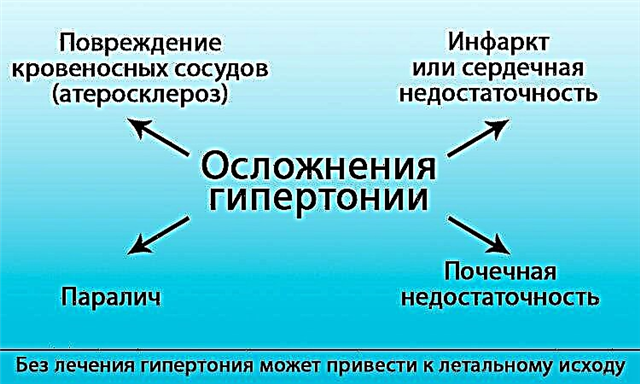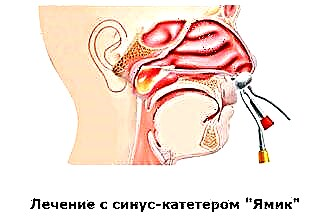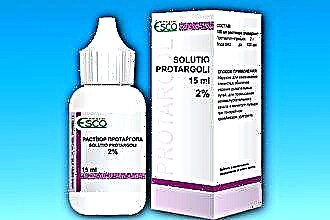Maxillary sinusitis is one of the most common diseases of the upper respiratory tract. It should not be treated condescendingly, since untimely and poor-quality treatment threatens health-threatening complications. To date, doctors have developed many medicines and procedures for the treatment of this ailment, their basis is antibiotic therapy. However, patients often ask the question whether sinusitis can be cured without antibiotics.
Types of disease and the rationale for the use of antibiotics
 Sinusitis can go through different stages of development, depending on the factors of exposure. So, the initial stage depends on the reason for the development of the disease, and what is its causative agent. There are several reasons for the appearance of sinusitis:
Sinusitis can go through different stages of development, depending on the factors of exposure. So, the initial stage depends on the reason for the development of the disease, and what is its causative agent. There are several reasons for the appearance of sinusitis:
- Viruses. They penetrate into the accessory pockets during the development or untimely treatment of respiratory diseases, such as acute respiratory infections, acute respiratory viral infections, flu or rhinitis. Viruses are transmitted by airborne droplets or by contact with a sick person. The result of their activity is swelling of tissues in the nose and narrowing of the lumen of the anastomosis, which leads to stagnation in the air chambers.
- Allergens. Seasonal or persistent allergies are becoming a scourge of modern society, their number is constantly increasing. Swelling of the mucous membranes with allergies is caused by histamine secreted by the body in large quantities, which is designed to fight the allergen. Over time, changes in the mucous membranes can cause polyps to appear.
- Mushrooms. This reason is not as common as others, but it is very dangerous because fungi can damage epithelial cells, and the produced antibodies can cause allergies. In addition, a fungal infection requires long-term treatment and is prone to chronic disease.
- Infections from affected teeth. They penetrate through a thin bone wall between the sinus and the oral cavity or through a fistula formed during the treatment or extraction of a tooth in the upper jaw. The chamber and parts of the filling material may get into the chamber.
- Bacteria. They can penetrate from the outside, but often in favorable conditions, when the body is weakened, bacteria that constantly inhabit the human nasopharynx are activated. More often than other pathogens are streptococci, pneumococci, staphylococci and diplococci, sometimes they can combine into intractable complexes.
- Mechanical obstruction to sinus drainage. They can be overgrown polyps or cysts, as well as damage to the cranial bones due to unsuccessful operations, injuries. As a result, the connecting canal is blocked or the epithelial layer is damaged, which leads to the development of disease-causing processes.
As for the use of antibiotics for various causes of the onset of the disease, they are definitely necessary in the case when pathogens are pathogenic bacteria. In other cases, antibiotic therapy is prescribed only when the initial stage has already passed, the bacterial microflora has joined the primary pathogen and a purulent form of sinusitis has begun.
Some doctors prescribe strong antibiotics for reinsurance, even with a catarrhal course of the disease, although this is not necessary. With viral or allergic sinusitis at an early stage, cure is quite possible with the help of simple medications, as well as rinsing the nose and physiotherapy. In the case of overlapping of the anastomosis due to mechanical damage or during the dental start of the disease, it is often impossible to do without a puncture, followed by the use of antibiotics.
Based on medical practice, we can conclude that the treatment of sinusitis without antibiotics is possible only at an early stage of the disease, when the first signs of a viral infection or a cold appear.
The presence of bacterial microflora and purulent processes in the maxillary cavities require the selection of the correct antibiotic.
Key areas of antibiotic-free treatment
Considering the question of how to cure sinusitis without antibiotics, one should understand what measures can be taken to improve the patient's condition without resorting to potent drugs. For all its effectiveness, antibiotics also have a number of negative sides, which should be discussed separately:
- The widespread effect of the active substance of the drug on all organs, which, in the presence of concomitant ailments of the gastrointestinal tract, kidneys, liver, cardiovascular system, is undesirable. This is especially true for tablet drugs, which pass through the stomach and intestines before exerting a therapeutic effect. No wonder, doctors recommend taking probiotics in parallel with the passage and after the end of antibiotic therapy to prevent the development of intestinal dysbiosis.
- Frequent inadequate use of antibiotics or early interruption of treatment can lead to the development of resistance to certain drugs. This, in the presence of a serious illness, will require more time and effort to select effective drugs.
- With severe swelling of the maxillary sinuses and impaired blood microcirculation, the effect of drugs may be weakened.
- Women expecting a baby or nursing mothers are often contraindicated in the use of potent medicines.

- On the Russian market, sometimes expensive antibiotics can be counterfeit.
To overcome the disease at the catarrhal stage of non-bacterial sinusitis, it is necessary to ensure that the following conditions are met:
- timely access to a doctor and the beginning of treatment when the first symptoms of rhinitis or respiratory disease appear;
- the use of the necessary drugs to combat pathogens, primarily viruses;
- removal of swelling of tissues in the nasal cavity and the area of exit of the anastomosis to prevent blocking of accessory pockets and ensure the processes of air exchange and outflow of fluid in them;
- regular liquefaction and removal of mucus from the sinuses and nasal cavity, if the discharge is transparent and liquid, then the bacterial agents have not yet joined the viruses, and there is a chance to be cured with "little blood";
- restoration of normal breathing through the nose;
- weakening of the symptoms of the disease, primarily the pain syndrome.
In order to accomplish these tasks, various methods can be used, first of all, it is taking the necessary medications, physiotherapy and traditional medicine.
What medications can be used to treat maxillary sinusitis
It is possible to prevent the transition of maxillary sinusitis from the catarrhal stage to the acute one by using the right medications in a timely manner.
Therapy for sinusitis, which develops as a result of the common cold, may look like this:
- Swelling of the nasal passages and connective canals is removed with decongestants. Water-soluble drops and aerosols (Nazivin, Galazolin, Nazol, Lazolvan rino) are more effective, they constrict blood vessels and return nasal breathing within 5-15 minutes after application. Oil-based drops (Tizin, Pinosol) envelop the inner surfaces of the nasal cavity and help restore the function of the mucous membrane.
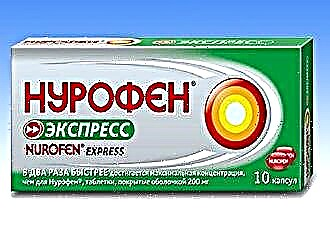 However, neither one nor the other can be used uncontrollably. In the case of prolonged use, water-soluble sprays lead to addiction, fragility of blood vessels and bleeding, and oil sprays - to inhibition of the motor function of the cilia of the ciliated epithelium.
However, neither one nor the other can be used uncontrollably. In the case of prolonged use, water-soluble sprays lead to addiction, fragility of blood vessels and bleeding, and oil sprays - to inhibition of the motor function of the cilia of the ciliated epithelium. - The pain is relieved by the familiar Nurofen, Paracetamol and Aspirin.In addition to the analgesic effect, they also have anti-inflammatory properties, which will help to normalize the condition of the tissues.
- Disinfection of the nasal cavity using various means. You can use Polydexa with phenylephrine, a complex preparation containing a small amount of the local antibiotic Polymyxin, as well as hormones. Alternatively, Isofra (the active ingredient is framycetin) or Protargol (the base is silver proteinate) are suitable. These drugs have contraindications, so they should only be used on the advice of an otolaryngologist. However, you can get by with simpler drugs, for example, a solution of Miramistin or Furacilin.
Such therapy can give good results if it is started on time and carried out consistently, in constant consultation with a doctor. Physiotherapy procedures that activate the resources of the human body to overcome the causative agent of the disease can enhance its effect. In any hospital, the patient will be offered to undergo a course of UHF or electrophoresis.
Modern methods of treating sinusitis without antibiotics
Medical science does not stand still, new ways of treating various diseases are constantly appearing. In particular, maxillary sinusitis at the stage of its development can be overcome using the following methods:
- Laser therapy. The doctor uses the high temperature generated by the laser to cauterize the inflamed soft tissues in the nasal cavity. Microburns, which the patient does not feel, thicken the surface layer of the mucous membrane, which prevents edema and makes it possible to breathe normally through the nose. Laser therapy has a thrombolytic and anti-inflammatory effect, relieves pain, fights viruses, "turns on" the immune system.
- Ozone therapy. Its essence lies in the fact that the accessory pockets are washed with an ozonized solution. The activity of ozone against fungi, viruses and various infections has been proven, sometimes it is higher than that of antibiotics. Ozone also enhances local immunity, removes toxins and oxygenates tissues.
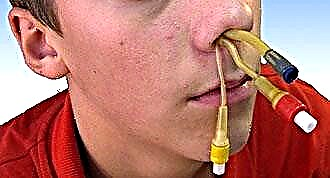 This type of treatment does not irritate mucous membranes and skin, does not cause allergies and is well tolerated by patients.
This type of treatment does not irritate mucous membranes and skin, does not cause allergies and is well tolerated by patients. - Drainage medication washing of the air cavities. A tube is inserted into the nasal cavity for several days, through which irrigation with drugs is performed.
- Nasal lavage in medical institutions by means of a YAMIK catheter (using a vacuum) or a special aspirator (method of fluid transfer according to Proetz). Such procedures are not traumatic, have few contraindications, and can be used to treat children and pregnant women. They are able to replace puncture and antibiotics with timely use.
Unconventional therapies
In the early stages of the disease, traditional medicine recipes can play an important role. The main thing is not to be arrogant, and to monitor your condition in order to prevent aggravation. At home, it is easy to carry out a number of measures to get rid of sinusitis. Most of the medicines are prepared independently from components of animal or plant origin.
Taking natural immunomodulators during the peak of respiratory diseases and when the first signs of a cold appear can stop the disease at the very beginning. Ingestion of infusions of yarrow, St. John's wort, rose hips, echinacea, propolis keeps the body in good shape and fights any foreign particles.
Inhalation. Simple steam inhalation has a very pronounced effect on the affected organs of the upper respiratory tract, thinning the secretion and helping to restore breathing.
- You can boil a few potatoes without peeling the peel, then heat them a little, after draining the water, and breathe for about 15 minutes, covered with a towel.
- Pour 15 ml of 20% pharmacy propolis tincture into two liters of boiling water (you can use 30 ml of homemade 10% bee glue tincture) and breathe deeply through your nose. Propolis has a pronounced bactericidal effect.
- Prepare decoctions of herbs and add them to boiling water for inhalation. Oak bark is suitable for this,
 currants, succession, calendula, chamomile, mint and other plants.
currants, succession, calendula, chamomile, mint and other plants.
Warming compresses. By acting with heat, they enhance local blood circulation and stimulate human defenses.
- Rub the unpeeled black radish root and wrap it in a thin natural cloth. The compress is applied to the sinuses for 15 minutes and covered with a warm towel. The skin under the compress must first be lubricated with vegetable oil.
- The same compress can be made from an onion, only after grinding you need to squeeze out the juice a little so that it does not get into your eyes. Keep it on for no more than 10 minutes to avoid scalding.
Nasal drops. In some cases, they can replace medications.
- Dissolve a pea-sized piece of propolis in 20 ml of boiling vegetable oil. To drip three times a day, 1 drop.
- Mix olive and corn oil (1: 1) and insist on St. John's wort for 24 hours. The solution warmed up in a water bath should be instilled lying down.
- Mix honey, celandine leaves and aloe juice. Pour 5-7 drops into each nostril four times a day. Do not swallow.


 However, neither one nor the other can be used uncontrollably. In the case of prolonged use, water-soluble sprays lead to addiction, fragility of blood vessels and bleeding, and oil sprays - to inhibition of the motor function of the cilia of the ciliated epithelium.
However, neither one nor the other can be used uncontrollably. In the case of prolonged use, water-soluble sprays lead to addiction, fragility of blood vessels and bleeding, and oil sprays - to inhibition of the motor function of the cilia of the ciliated epithelium. This type of treatment does not irritate mucous membranes and skin, does not cause allergies and is well tolerated by patients.
This type of treatment does not irritate mucous membranes and skin, does not cause allergies and is well tolerated by patients. currants, succession, calendula, chamomile, mint and other plants.
currants, succession, calendula, chamomile, mint and other plants.